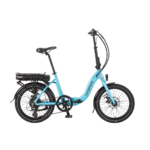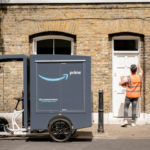Certainly Lesley.

NiMh battery cells still have a residue of the "memory effect" that was a problem with the preceding NiCad types. What this meant on NiCads was that if they were charged when only half discharged, they could chemically "remember" the point at which that charge commenced and sometimes refuse to issue current below that point. Obviously that could greatly reduce the capacity of a battery, and therefore the range that a bike had.
There's only a very slight tendency for that to happen on NiMh batteries, and it's easily prevented. All they need is from time to time have their content fully used up before the next charge. The way in which this is organised isn't critical, but around once a month or once every ten charges or so is ok.
Of course it's extremely inconvenient to ride an e-bike until the battery runs out and then have to pedal it home without power, so that's generally avoided in various ways. Some have a spare battery with them when they do the "emptying" trip. Others get used to their bike's range and run it very close to the empty point, also using the bike's battery meter to judge the remaining charge, and that's also good enough, taking it to cut-out not being vital. Some e-bike manufacturers thoughtfully supply chargers which have a discharge function, sometimes called "refresh", and with that a battery already fairly low can be discharged with the recharge automatically commencing afterwards, and that's best of all of course.
However, NiMh batteries should never be independently discharged with resistors or a lamp until empty, since being truly empty can destroy them and prevent acceptance of charge. The bike's controller and chargers with a discharge function just discharge down to about 1.1 volts per cell, a safe level from which they can recharge.
So in summary, all that's necessary is to run the battery to cutout or near to that on the bike or suitable charger, once in a while.
P.S. Thanks for this question Lesley. I've posted the content of the above in the Battery FAQ section for other's future reference.
.


 ) if the rules allow it I am thinking of buying an additional battery at the same time to take advantage of the savings.
) if the rules allow it I am thinking of buying an additional battery at the same time to take advantage of the savings.





